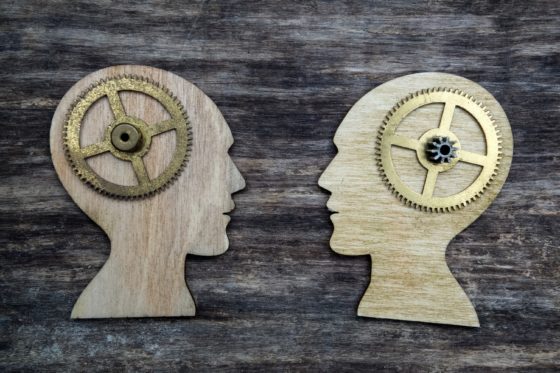
The ability to quickly and accurately localize content is a game-changer for businesses aiming to make an impact worldwide. How are leading companies effortlessly scaling their content production for global markets? The answer lies in AI-enhanced translation workflows underpinned by the people that deploy and support them.
AI technologies are transforming traditional translation workflows into dynamic, efficient systems by harnessing advancements in machine learning and natural language processing. These innovations reduce manual effort, improve quality, slash costs, and allow human translators to concentrate on nuanced language aspects that machines have yet to master. From speeding up turnaround times to maintaining brand voice across multiple languages, AI is making it possible to scale content production like never before.
Here, we’ll explore how AI is reshaping translation workflows, making large-scale global content production more accessible and effective for businesses across industries.
What is a translation workflow?
Translation workflows are comprehensive processes that vary by industry and content type, designed to convert content accurately from one language to another for multilingual audiences. It refers to the entire ecosystem of the translation process and includes both human processes and technology. These workflows typically involve several key steps:
- Pre-translation: preparing documents and making them ready for translation and preparing style guides and glossaries for translators to reference. This critical stage sets the groundwork for an efficient process and high-quality results. Much of this is automated.
- Translation Memory leverage: past translations are leveraged at this stage, reducing the volume that needs to be translated from scratch.
- Translation: At the heart of the workflow, content is translated, whether by human linguists, machine translation (MT), or a mix of both.
- Quality assurance (QA), required to drive high-quality standards, may involve a mix of steps, including reviews by human linguists, automation, and/or back translation.
- Post-translation: After translating, files are returned for final processing and possibly internal review. This step involves converting the file to the original format, fixing formatting, matching the original design and intent, and preparing the content for publication.
How AI is used in translation
AI has the potential to make every aspect of this workflow faster, smoother, and more efficient, starting with the act of translation itself.
The benefits of AI in translation
As businesses seek to expand into new markets, the amount of content they need to localize grows exponentially. Machine translation (MT) has become an essential tool for handling the massive volumes of content required for a successful globalization effort. Here are three key ways AI translation can benefit localization efforts.
- Speed and efficiency: AI dramatically accelerates the translation process, enabling quicker turnaround times that are crucial in today’s fast-paced market. By automating the translation and processing of large volumes of content, AI systems can complete large projects in minutes, not days.
- Cost savings: Translation with AI reduces the reliance on human linguists, which can be a major expense in traditional translation processes. Businesses can stretch their localization dollars further by streamlining workflows and saving human expertise for more complex tasks that machines can’t do yet. As a result, localization at scale becomes more accessible, even for companies with limited budgets.
- Consistency: Maintaining consistent terminology and style across large volumes of content is challenging but essential for brands looking to maintain their voice across different markets. The answer is to train AI translation engines on translation memories and style guides to ensure that every piece of content remains true to the original tone and terminology. AI can also be integrated into computer-assisted translation (CAT) tools to apply translation memories efficiently and effectively.
Advanced translation technologies
There are many AI translation approaches, but the two most important ones today are neural machine translation and Large Language Models (LLMs).
- Neural Machine Translation (NMT) is a leap forward in machine translation technology, producing more accurate translations than older rules-based and statistical MT methods. Unlike its predecessors, NMT uses deep learning to understand context, mimic human-like translations, and continually improve with more data.
- LMMs (Large Language Models): tools in this category include ChatGPT, Bard, and PALM2. These are pre-trained on massive amounts of text data, allowing them to acquire language knowledge and patterns from diverse sources in all languages. They create content based on predictions and, as a result, can generate text that sounds human-like and conversational. They are more fluent but less accurate and predictable than NMT.
Both types of AI engines can be used ‘off the shelf’ but can also be customized based on industry-specific or company-specific terminology, offering tailored solutions across various industries. This fine-tuning produces accurate and relevant translations to the specific audience, improving quality and the user experience.
Together, these technologies have significantly boosted viable and effective applications of automated translation, but some content is still best left to human linguists.
Challenges and limitations in AI translation
Despite these advancements, AI-driven translation still has limitations. To deploy it effectively, businesses must understand these limitations and learn how to compensate for them.
Areas where AI still faces challenges include:
- Idiomatic expressions: Idioms that make sense in one language often don’t have direct equivalents in another. For example, English speakers are unlikely to grasp the meaning behind the Polish idiom “Did you fall from a Christmas tree?” if it’s directly translated without additional context. (“Were you born yesterday?” is a close English equivalent.)
- Cultural nuances: Translation often requires a depth of knowledge that goes beyond words. How people in a specific culture behave, think, feel, and believe affects how content is translated for them–and a machine can never know that. Preserving these cultural nuances is the key to accurately transferring meaning and impact from one language to another. It’s how you create translations that resonate with your intended audience.
- Context: The same word can mean different things in different situations, and AI can struggle with choosing the appropriate meaning for the context.
Researchers are continuously working on improving AI’s ability to navigate these complexities, with developments in machine learning and natural language processing aimed at enhancing understanding and accuracy. For example, researchers are working on ways to overcome the need for more training data for low-resource languages.
AI beyond translation in the translation workflow
Beyond direct translation, there are a number of ways that AI can be used to optimize the entire localization workflow:
- Automating pre-translation tasks, like extracting text from non-editable formats and organizing content into manageable segments.
- Assisting in determining subject matter to ensure it gets to the best-suited translator for the job.
- Automating post-translation steps like reformatting translated texts to match the original document’s layout.
- Quality control: AI tools can spot and correct inconsistencies and grammar issues and keep terminology consistent across large localization programs.
- Automated routing: AI can analyze texts and determine the appropriate workflow based on content type and complexity, reducing the amount of human oversight required. For example, texts that need a human touch get routed directly to human translators, and texts suitable for MT go through that process and then get automatically sent to human translators for QA if needed.
Global content at scale with managed translation workflows
Integration with Translation Management Systems (TMS)
AI’s integration into Translation Management Systems (TMS) is revolutionizing how businesses manage and execute their translation projects. By embedding AI capabilities, top industry platforms are enhancing their performance, making translation workflows more efficient and intelligent.
- One platform uses AI to automate translations, select the most suitable MT engine for a given piece of content, leverage translation memories and glossaries to improve MT quality, and determine whether MT output will likely require post-editing.
- Another leverages AI for quality control, providing AI-based quality estimation for MT output.
- A third incorporates AI to streamline workflows, from automated content detection and translation to quality checks. Their dynamic workflows use condition-based rules to decide where to send content.
- A final one uses AI to help translators find answers to questions in product documentation, to review translations for quality, and to customize MT engines.
From automatically processing and preparing files for translation to enhancing the quality of the final output, AI helps significantly reduce manual effort and increase the speed of delivery.
Real-world technology, real-world success
Two real-world examples highlight the transformative power of AI in translation workflows.
In one customer example, a leading commerce platform faced a tight three-day window to localize content into 14 languages within their two-week sprint cycle. The solution? Automated workflows to enable simultaneous language updates, meeting the client’s rigorous schedule.
Similarly, a global eCommerce marketplace needed to translate millions of words for launching in French and German. Through the strategic use of NMT and customized solutions for diverse content types, Acclaro built a fully integrated and automated MT solution that produces high-quality MT translations and routes high-impact marketing assets to our team of vetted, in-county linguists.
These success stories demonstrate AI’s role in enabling businesses to scale globally and improve market connectivity efficiently.
Future trends in AI-driven translation
Emerging trends in AI-driven translation are set to further transform our approach to multilingual communication. Integrating augmented reality (AR) and virtual reality (VR) offers exciting possibilities for immersive, real-time translation experiences. Google has already demonstrated AR glasses that use MT to translate conversations in real-time, and Meta’s AI translation model is designed, in part, to create virtual reality experiences where language is no barrier to interaction.
We expect these technologies to become even more widely available, cost-effective, and easy to use. This evolution towards instant, accurate translation paves the way for a future where language differences are no longer barriers to global communication.
Unlock global potential with AI localization solutions
The future of AI in translation is bright, with emerging trends indicating a shift towards more integrated and effective solutions that take advantage of automation in all stages of the translation workflow. Let’s recap:
- AI-driven translation workflows transform localization by enhancing speed, efficiency, and scalability for global market penetration.
- Machine learning and neural machine translation automate tasks, improving accuracy and consistency while optimizing costs.
- Tailored AI engine customizations deliver precise translations across various industries, improving relevance and understanding.
- AI translation technology continues to improve, creating new ways for innovative businesses to communicate with customers worldwide.
Join the leading global brands that have successfully navigated the shift to AI-enhanced translations with Acclaro. Reach out today to learn how we can customize solutions that fit your unique needs for smooth, effective global communication.
Insights for global growth

Power your strategic growth
Go beyond tactical localization with tailored, strategic solutions that resonate locally and drive growth globally.
Get started



